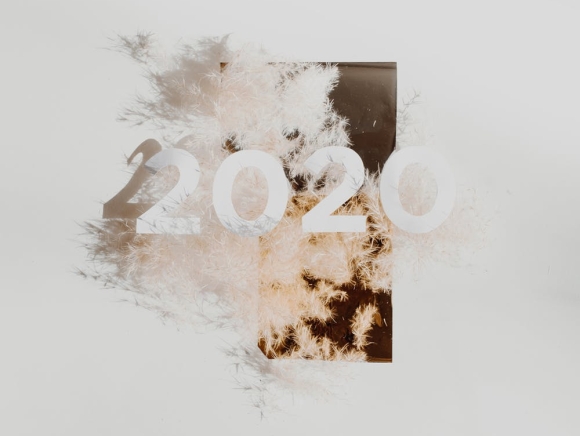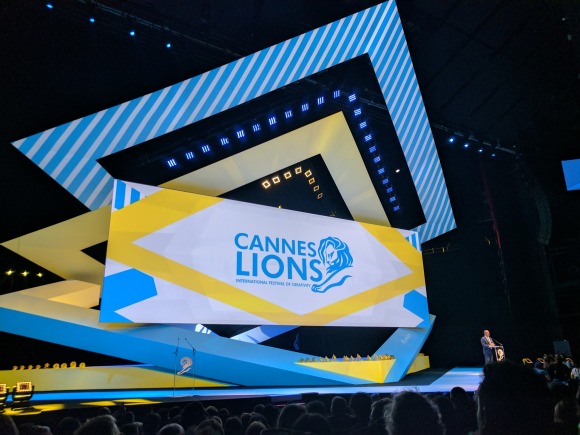
Image courtesy of Evie Shaffer on Pexels – Thank You
From the obvious to the not so obvious, for the last few years I’ve shared my musings for the year ahead at the break of each year and 2020 is set to be a big one so I’ve put some thought into a big list.
The below 20 predictions are informed by insights derived from three places; recurring conversations I’ve had with colleagues and clients over the last year as we look ahead together, industry roundtables and networking discussions and correlations derived with my team of data wizards (scientists make them sound rather boring) from multiple data sources.
I’ll certainly find it interesting to look back in a year and see how many were along the right lines. Grab a cuppa this is a 10 minute read (if you’re not skimming it)…
1. Voice will have a bigger say
Voice assistants continued to dominate 2019 with increased adoption of in-phone and in-home use, couple that with a wider acceptance that Alexa really isn’t interested in what you do in your spare time unless you ask her to be and it’s no wonder that by 2023 the estimated adoption will almost double from just over four billion in 2020 to eight billion voice assistants globally (source: Statista). 2020’s usage will extend through hands free use of ear buds and in car adoption.
2. 5G will destabilise mobile data expectancy
It was a big promise for 2019 that was never really delivered against so as it’s again marked for bigger adoption in 2020 many mobile experts are calling out that in fact when it does work it simply puts pressure on areas still in 3G (sometimes still 2G) to bridge the gap. The knock on effect to this is that supply chains are becoming more complex, more fragmented and finding it harder to deliver against consumer expectation at scale. This is not great news for brands with an audience who like to globetrot.
3. Next hour delivery will surge forwards
Yep, we’re a demanding bunch when it comes to getting what we want, when we want it wherever the heck we are. The rise of cashless societies and intelligent end to end supply chains – with the latter end being wherever our mobile phone is – and Amazon continuing to narrow the timeframe means we should expect; that last minute mascara drop, the oh sh*t I ran out of nappies drop and the night on the town LBD drop within an hour of hitting BUY NOW.
4. Data will make decisions
This might sound a bit obvious, but actually for all the hype around using data big or small, most brands are only really just getting to grips with analytics let alone algorithms. Brands that win will have a smart data lake set up to make insightful decisions. These decisions will be built around their consumers, geared for business profitability and secured for brand strength.
5. AI will get emotional
After years of dabbling with empathy notes through the use of AI we’ve teetered on the edge of putting it to good use, and I’m not talking about sophisticated spam (otherwise known as programmatic advertising). 2020 will see the use of emotional AI to better predict a users need or desire and to ensure those needs and desires are reflected in how the brand interacts with them from that point on. This will move interactions from functional to emotional understanding of each journey stage from advertising through to CX for the lifetime of that relationship. The boundary between tech and human must remain intact however, it should be sentient not systematised stalking.
6. Our brains will start interfacing with computers
Not as crazy as you think! Yes it’s true Facebook acquired CTRL-Labs in 2019 and Elon got Neuralink working on rats, but closer to home there were several successes across 2019 to translate neuro-signals directly into computers in the medical field, to name a few; Texas Tech Uni translated EEG signals into emotional data, a team of scientists in Washington invented a device that can control neural circuits using a tiny brain implant controlled by a smartphone to help uncover brain diseases such as Parkinson’s and Alzheimer’s, Dartmouth College Researchers identified a non-verbal, neural marker of autism offering potential to diagnose autism in the future. MedTech seeps into other industries so I suspect 2020 will see this technology being played out for experiences, I only hope Facebook don’t control the road there!
Talking of Facebook…
7. The social tech giants will feel a stronger spotlight upon them
More rigour will be put into setting rules and regulations that lend to ensure the services of big social platforms such as Facebook, YouTube and Twitter help solve real, non-trivial, problems rather than create them. Following the political clusterf*cks of the past few years and the pending elections in 2020 the pressure will be on to ensure that humanity is enabled through social connection, not persuaded, influenced and cheated. Brands that win will demonstrate transparency and honesty in how they operate and use these platforms.
Meanwhile…
8. Deepfakes will work harder to stir up controversy
DF tech is not only hugely sophisticated now but more scarily it’s widely available. With the upcoming presidential election already something of a controversy I suspect that will be a big target. I only hope (as I know so many others do) that the general awareness of this tech and indeed overall fake news is leaving audiences informed enough to stop the spread.
but there is hope!
9. Not for profit news will take force
Whilst the eye of Mordor will be on the social and for profit news platforms, the growth of nonprofit, public serving news teams will start to make a difference. In the states there are several state specific newsrooms that have sprung up over the last couple of years, and across Europe we’re seeing the same too. They will win by providing their communities with independent, balanced, informed and trusted news so that local communities can make their own decisions.
10. Humans will reconnect without tech
There is fatigue around being constantly connected to each other all of the time and just because we can be on the internet, doesn’t mean we should. In the workplace we will see continued efforts to create spaces for people to come together away from email, more workshops will take place outdoors away from the office, day to day people are booking WiFi free holidays, escaping up mountains or under the sea, families are enforcing mobile phone free time and making more effort to bring generations together more often. Hooray for real hugs and not virtual ones!
OK, we’re halfway through..
11. Pier-to-pier services will grow
Whether you’re getting your IKEA shelves assembled, your car pooled, your business funded or your lost luggage returned by a guest staying at the hotel you just left – pier to pier support networks are taking off in clusters around the globe and I think we’ll see an upward surge in adoption of these services.
12. Demand for on Demand will rise and simplify
We’ve seen a proliferation of streaming services and the (ahem) rollout of 5G should make it easier to access content on the go but, it’s been getting messy and service providers have got desperate in the greedy race against each other. 2020 will be the year consumers realise they don’t need to spend as much on entertainment and will choose their preferred supplier and cut the rest.
OK, less about tech and more about people…
13. People will focus on fun more
The last decade has largely been about saving for your future self, a self that for the masses has been thrown into turmoil by political and economical strife. As we stride into the ‘Experience Era’, we do so with consumers who are realising once again that life is for living and freeing themselves of the shackles their previous generations held them to. We will see much more fun and excitement in how people go about their every day whilst still keeping an eye to what’s next. Brands that win will embrace and enable this as often as they can.
14. GenZ will make treads on writing the change for our future
2019 saw a huge uprising in GenZers self proclaiming to be the generation that will save us all from the damage we have caused; the world, the news, our images, our self esteem and so on. 2020 is set to be stirred up and driven even more by GenZ seeking to change the future whether; Greta Thunberg for climate change (I imagine you know who she is), Billy Monger for Adversity (a double amputee F1 racer) or Tiffany Zhong for smart investing (she’s one of the worlds youngest VC’s). And if you think you’re older and wiser you should still be listening because according to McKinsey and Gartner GenZ will make up 40% of consumers before 2020 is out.
15. Brands that ignore CX will lose out
We have seen first hand how the digital evolution is fundamentally altering consumer expectations; changing how companies and brands create, deliver and capture value. Simply changing technology or ‘doing’ digital is not enough. Our BAV studies (you can learn about this here) showed that brands that create connected experiences for and around their consumers (CX) see on average: 51% uplift in differentiation from those that don’t, +38% brand esteem (strength and stature), 41% increase to become a top preference, see +21% emotional commitment, have +17% commitment and loyalty and +31% pricing power. It quantifiably strengthens not just the brand but the sustained business growth. The Forrester CX Index shows that every CX focused business profited in 2019, an insight also backed by the S&P 500 that additionally highlights those that didn’t embrace CX fell in value.
16. Successful brands will show loyalty (proactive CX) before expecting loyalty in return
Smart brands know that profitability is better related to loyalty rather than constant market share growth. Having spent years challenging lazy marketers to stop handing out briefs that have the objective ‘to grow’ in them (obviously you want to grow if you’re marketing!!!) I am finally seeing many, many more brands leaning in to proactively sorting their CX offering so they can offer credible value to consumers before expecting purchase in return. These brands will win in 2020 and the next decade belongs to them.
17. Businesses will combine and simplify their revenue portfolios
Brands and businesses that understand their consumers have already started aligning silo’d teams around combined business models as an output, combining; sales, marketing, customer services and product development. This helps de-silo customer data and provide a ‘one customer pov’ (if you believe in such a thing). 2020 will see the knock on effect of this, and as business model innovation leads to full attribution and one overall return so we will need the coming together of all revenue-driving teams.
And to end on a few big points…
18. Climate change will force business change
At some point in every business value chain there is a crossroad with nature and the ignorance to the impact of these crossroads has been displaced too much over the last few years. There is nowhere to hide and no excuse to do so anymore and I think 2020 is the year that businesses will be forced to stop ignoring the signs as their bottom lines decline whether directly or indirectly related to climate change. A mixture of social responsibility, shifts in management, technology adoption, consumer awareness and consumer loyalty combined have got us to a critical mass for changing business models in order to address their damage on our climate.
19. Consumers will enforce profit and purpose to become combined metrics through their purchase decisions
Further to my point above, consumers buy into brands that consistently and clearly stand for something good. 2019 called for brands to DO stuff not just SAY stuff and 2020 will see the evolution of this. My mantra remains steady as we head into this next year ‘Good Businesses will do Good Business’. It’s not complicated; if you’re damaging the climate then you’re damaging your bottom line. So if you use plastic packaging, find a way to stop. If your product is full of unsustainable sources, find sustainable ones. STOP putting the emphasis on your consumers and START putting it on your business.
20. Businesses will recognise that people (not tech) will lead them into the future
From start ups to global corporations, the era of relying on technology to drive the future is shifting to one that recognises more widely that technology should drive the people to drive the future. I think we will see a reprioritisation of effort and investment around human centred thinking and doing within organisations, this in turn will be reflected on how these businesses act outwardly and the uplift on brand strength and business performance will be visible. As Henry Ford once said, ‘A business that makes only money is a very poor business.’
And there you have it, if you got to the end THANK YOU. I hope you found some of it interesting and the very best of luck to you and your business in 2020.








